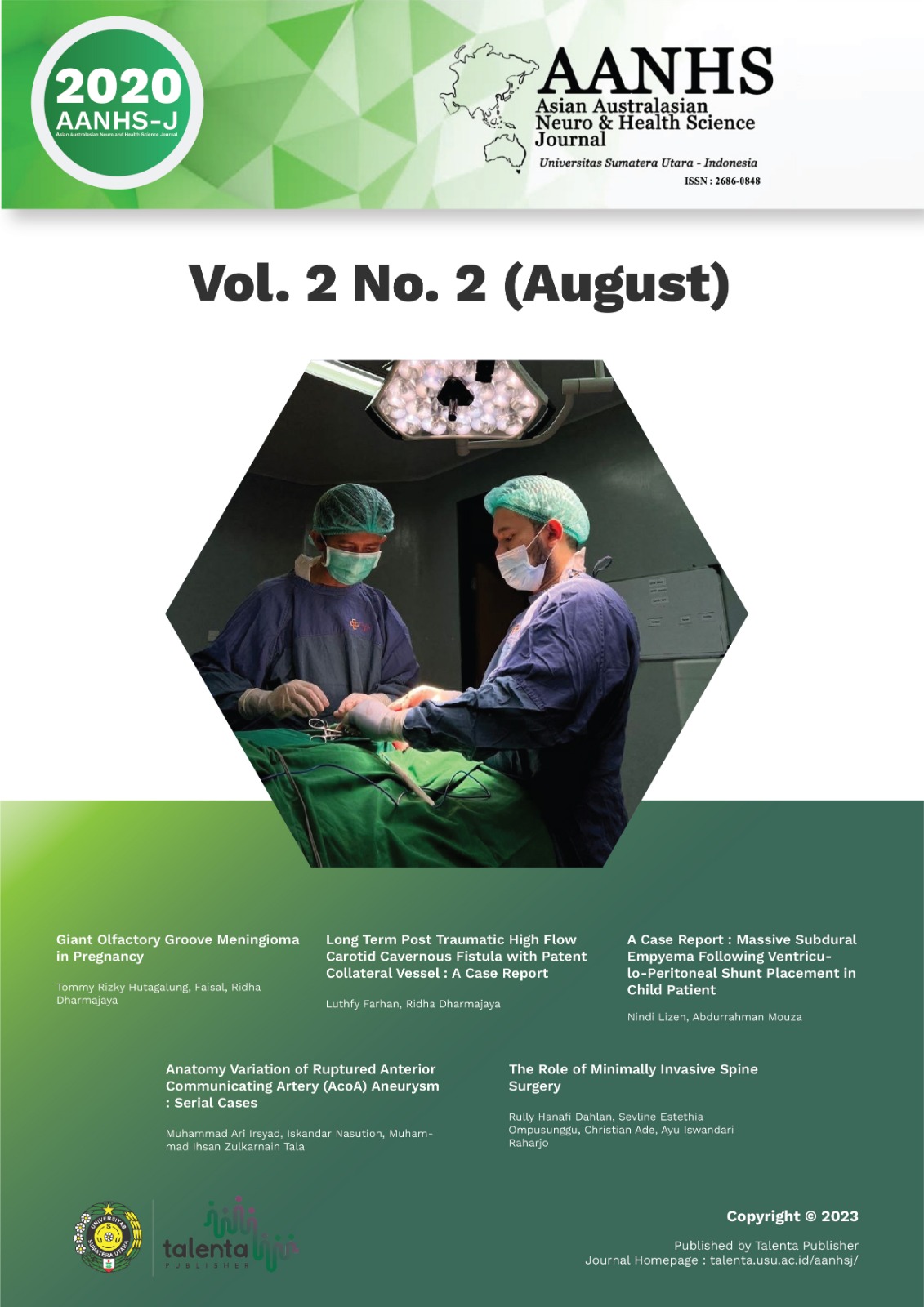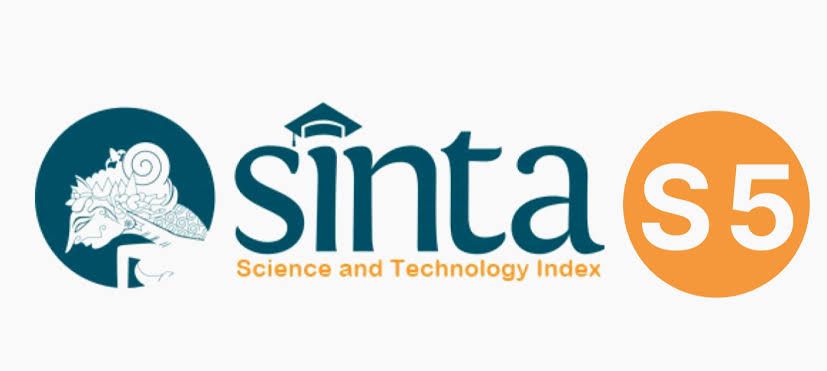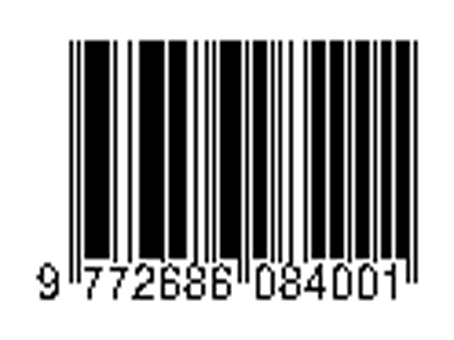Long Term Post Traumatic High Flow Carotid Cavernous Fistula with Patent Collateral Vessel : A Case Report
DOI:
https://doi.org/10.32734/aanhsj.v2i2.4338Abstract
Introduction : A carotid-cavernous sinus fistula (CCF) is an abnormal communication between arteries and veins within the cavernous sinus. Carotid cavernous fistula (CCF) is a very rare case it's difficult to diagnose. because most CCF patients rarely come for treatment.
Case Report : A 33-year-old male presented with history of protrusion of Left eye ball, and double vision for the last 2 years. visual disturbances were found in the right eye for 2 years, blurry vision is increasingly. Bruit was audible in orbital region on the left side. DSA showed that there was a fistula in the left sinus cavernous region, the arteries in the left area showed inadequate to direct the left hemisphere, but in the right arety showed that the right artery was adversely affected right and left brain.
Discussion : Traumatic CCFs are the most common type, accounting for up to 75% of all CCFs.87 They have been reported to occur in 0.2% of patients with craniocerebral trauma and in up to 4% of patients who sustain a basilar skull fractur.2 The symptoms and signs of CCF always include eyelid swelling, proptosis, chemosis, and hyperaemia, dilated of vessel and the condition is commonly misdiagnosed as Graves’ophthal-mopathy or inflammatory conjunctivitis.3Cerebral angiography is the gold standard for the definitive diagnosis, classification, and planning of endovascular intervention in CCFs. Angiographic results in this patient showed a fistula in the left cavernous sinus and inadequate supply of the left artery to the left hemisphere.
Conclusion : This case is very unique because the left brain gets blood supply from the right carotid system, with the left carotid artery system inadequate to direct the left hemisphere because of the carotid cavernous fistula on the left side
Downloads
Downloads
Published
How to Cite
Issue
Section
License
Copyright (c) 2020 Asian Australasian Neuro and Health Science Journal (AANHS-J)

This work is licensed under a Creative Commons Attribution-NonCommercial-NoDerivatives 4.0 International License.
The Authors submitting a manuscript do understand that if the manuscript was accepted for publication, the copyright of the article shall be assigned to AANHS Journal.
The copyright encompasses exclusive rights to reproduce and deliver the article in all forms and media. The reproduction of any part of this journal, its storage in databases and its transmission by any form or media will be allowed only with a written permission from Asian Australasian Neuro and Health Science Journal (AANHSJ).
The Copyright Transfer Form can be downloaded here.
The Copyright form should be signed originally and sent to the Editorial Office in the form of original mail or scanned document.














